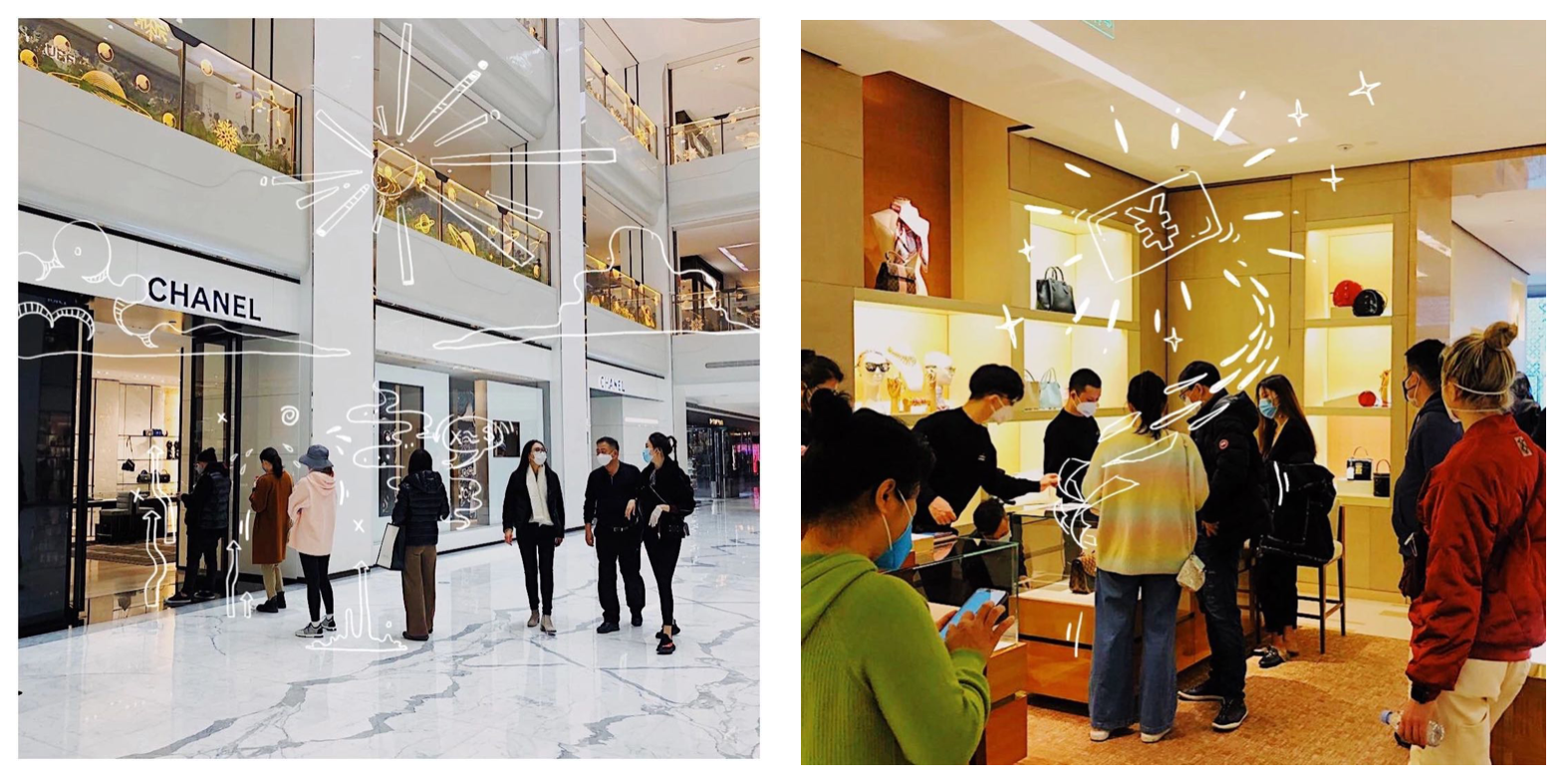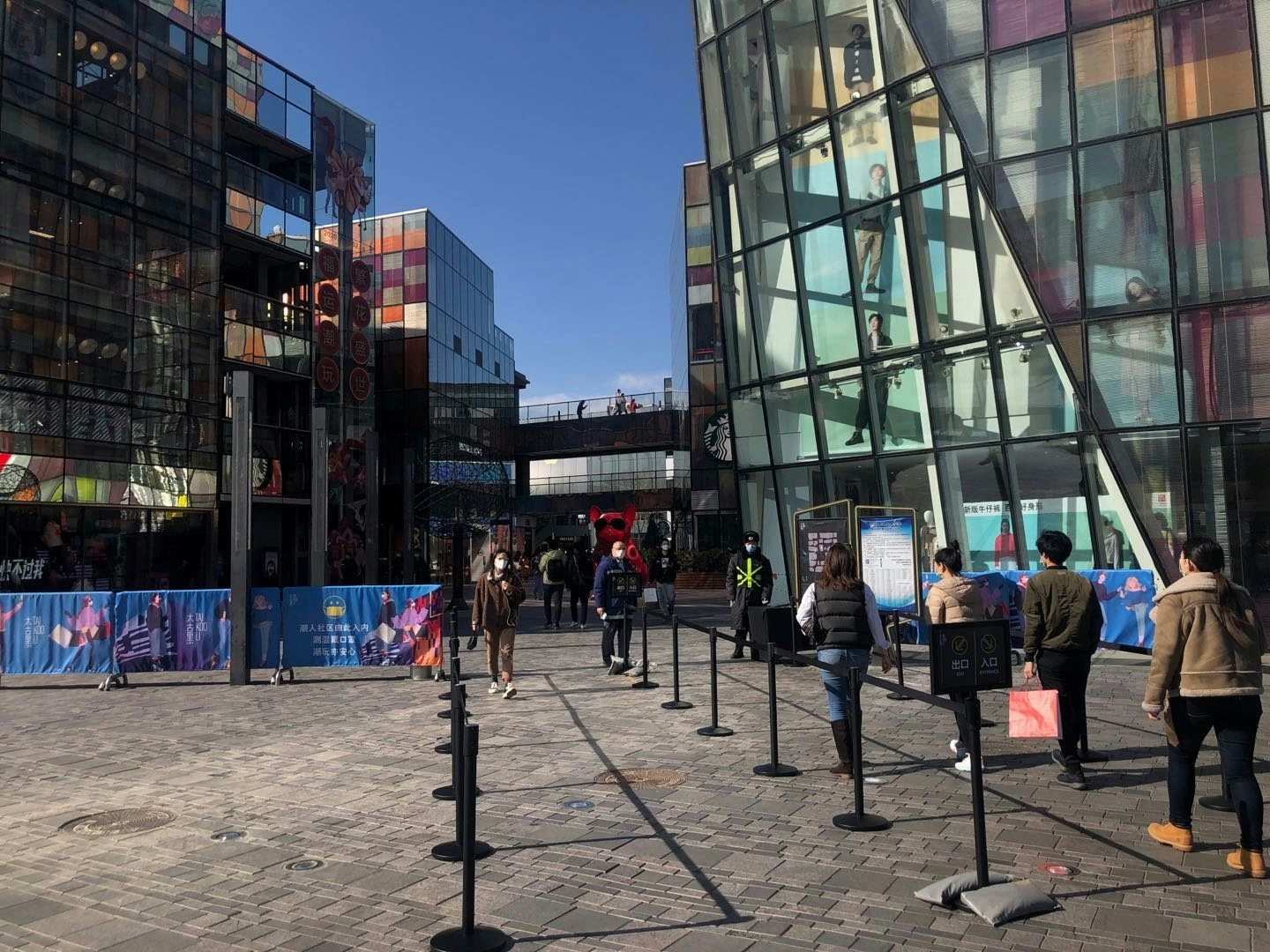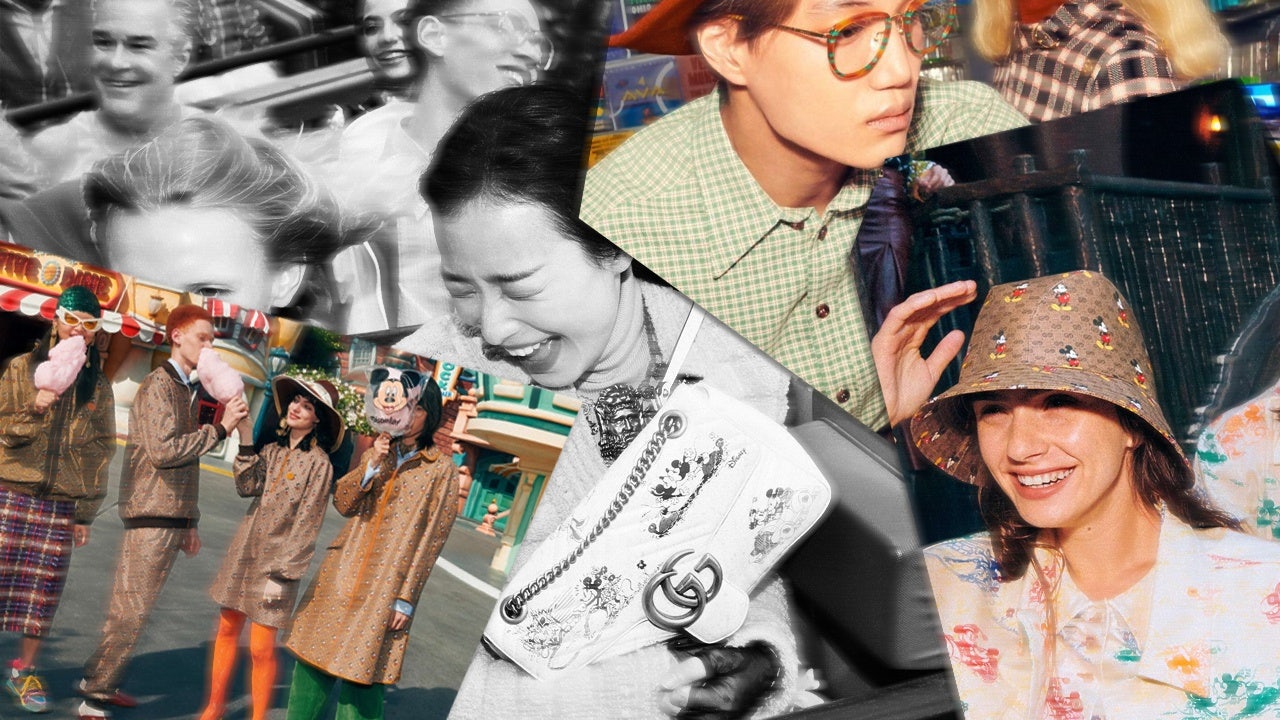China is embracing springtime, as the COVID-19 outbreak continues to slow. On Thursday, China reported no new cases of domestic virus infections for the first time since the outbreak began, and recent new cases have mostly come from overseas, signaling that the worst has passed as of now.
But as more residents go outside and resume activities, a term that's been discussed frequently in the media is coming to the fore: “revenge spending.” The phrase describes how shopping-starved consumers will come out of quarantine and overcompensate by making more purchases than normal. Brands have already seen a modest jump in sales, but how much can they rely on these predicted spending sprees?

Offline stores are already welcoming the recovery of foot traffic. Pictures of people lining up outside of SKP Beijing and at Bicester Village in Shanghai have been circulating online. It was reported that the high-end Hangzhou Tower mall opened for five hours on February 22 and achieved more sales than on the same date a year ago.

To confirm, we visited the busy local shopping district Sanlitun in Beijing on March 14 (a Saturday afternoon), where the recovery foot traffic was readily apparent. Even though few customers were spotted in stores, many people carried shopping bags, posed for pictures, and documented their new-found freedom in and around the malls. Long lines were forming outside of the local bubble tea shop Heytea and the Apple Store.
China’s e-commerce market was also showing promising signs of life. The last major marketing event, March 8’s International Women’s Day, was a crucial indicator of how China’s consumption was bouncing back. In March, many major brands on Tmall experienced double-digit sales growth as compared to last year. Beauty brands like Estée Lauder and Lancôme stood out in particular, and since the virus outbreak called for a health focus, sportswear companies such as Nike saw sales increases.
Emphasis on domestic shopping#
As the global COVID-19 situation worsens, brands are prioritizing the slow recovery of China’s market. Amrita Banta, the managing director of Agility Research, a consultancy dedicated to providing global HNWI spending habits to brands, said in an interview with Jing Daily that “domestic shopping will continue to increase at even higher growth rates than last year.”
Domestic flights are also recovering. Shenzhen airport is back to 70 percent of its flight capacity — quite a contrast to mid-February when 85 percent of all its domestic flights had been canceled. Even though we can’t equate growing domestic travel with more luxury spending, it reinforces how brands should hone in on China’s market as the virus situation worsens elsewhere around the globe. But China’s spending uptick doesn’t mean brands will weather the global storm.
“It isn’t going to recover losses by any means, and store customer capacities are still being kept lower than normal,” said Banta. “We also observed brands offering deeper discounts at outlet boutiques than normal.”
A shift toward conscious spending#
Recent consumer research on affluent Chinese consumers showed a rise in conscious shopping, signaling to luxury brands that they can’t simply bet on “revenge spending” for recovery.
According to the latest report from global communications consultancy group Ruder Finn, 82 percent of over 800 consumers surveyed in mid-March with an annual family income of over a million RMB think the virus is negatively impacting the Chinese economy, particularly those between the ages of 36 and 45. They are planning to cut back on spending in the jewelry, handbag, and beauty sectors but showed more willingness to spend on travel, fine dining, and high-end leather accessories.
“Revenge spending won’t become a mainstream phenomenon,” said Gao Ming, Senior Vice President and Managing Director of luxury practices in greater China at the Ruder Finn Group. “Certain types of luxury goods may experience a warm-up in consumer demand. However, brands are facing a bigger challenge in addressing the cut-back on spending, and they ought to learn how to build relationships with consumers in the post-virus era.”
Recovery depends on the consumer segment#
Another report on the HNWI consumer segment showed similar results: that the experience of going through a devastating pandemic has led consumers toward conscious spending shifts that range from choosing sustainable brands to saving more money for retirement. Among the 250 Chinese millionaires that Agility Group researched in mid-February, 86 percent of affluent consumers had a positive outlook on the future. “HNWIs are more resilient than [middle-income] or affluent people since they have some security already,” Banta explained.
Meanwhile, the general sentiment among mass consumers runs on a similar trajectory, but it varies slightly by age and city-tier, offering new opportunities for brands. A survey of over 1,000 consumers over the past three weeks — conducted by the Chinese investment bank China Renaissance — showed that consumers from first- and second-tier cities were more willing to save and purchase a house, car, or insurance, while consumers from fourth-tier cities were the least likely to save. People between the ages of 18 and 35 were thinking about tightening their budget, but people over the age of 45, as well as students, showed greater confidence in spending.
What should brands focus on next?#
- Expect consumers to cut back on spending and shouldn’t rely on “revenge spending” for growth
- Adjust recovery plans by both region and consumer segment
- Prioritize building customer relationships
